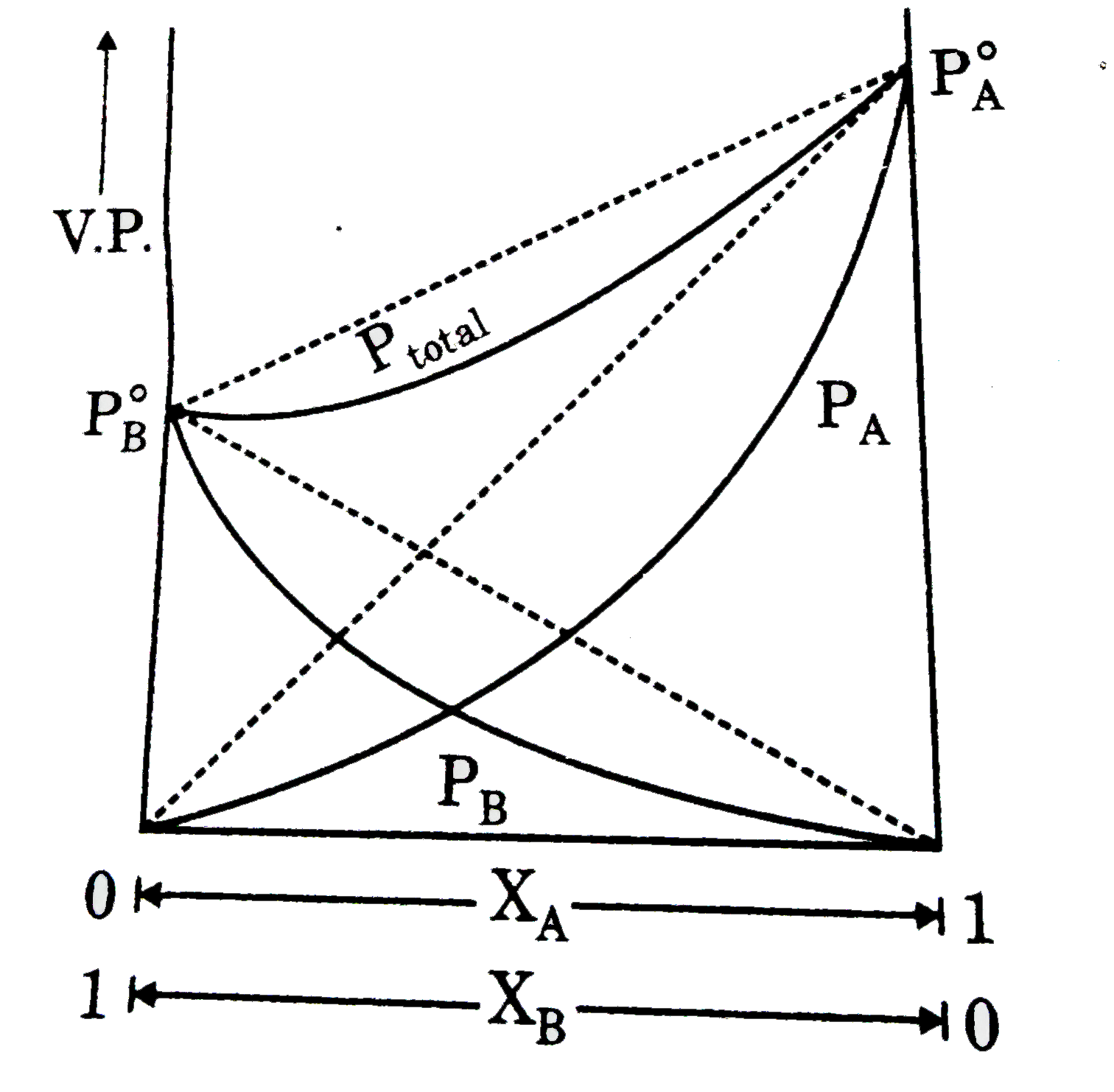A solution containing components A and B follows Raoult's law when
A - B attraction force is greater than A - A and B-B
A - B attraction force is less than 4 - A and B-B
A - B attraction force remains same as A - A and B-B
volume of solution is different from sum of volumes of solute and solvent.
The correct Answer is:C
Raoult.s law is valid for ideal solutions only. The element of non-ideality enters into the picture when the molecules of the solute and solvent effect each others intermolecular forces. A solution containing components of A and B behaves as an ideal solution when A-B attraction force remains same as A-A and B-B.
Topper's Solved these Questions
- SOLUTIONS BOOK - MTG GUIDECHAPTER - SOLUTIONS EXERCISE - CHECK YOUR NEET VITALS
25 Videos
- SOLUTIONS BOOK - MTG GUIDECHAPTER - SOLUTIONS EXERCISE - AIPMT/NEET MCQs
23 Videos
- SOLUTIONS BOOK - MTG GUIDECHAPTER - SOLUTIONS EXERCISE - AIPMT/NEET MCQs
23 Videos
- SOLID STATE BOOK - MTG GUIDECHAPTER - SOLID STATE EXERCISE - AIPMT/NEET MCQS
17 Videos
- SURFACE CHEMISTRYBOOK - MTG GUIDECHAPTER - SURFACE CHEMISTRYEXERCISE - AIMPT/NEET MCQS
11 Videos
Similar Questions
Knowledge Check
A solution containing components A and 8 follows Raoult's law, when
AA-B attraction force is greater than that of A-A and B-BBA-B attraction force is less than that of A-A and B-BCA-B attraction force is same as that of A-A and B-BDNone of the aboveAnswer the questions (given below) which are based on the following diagram: vapour pessure diagram for real solution of two liquids A and B that exhibit a negative deviation from Raoult's law. The vapour pressure of both A and B are less than predicted by Raoult's law. The dashed lines represent the plots for ideal solutions.

Solution containing components A and B show this type of deviation from ideal behaviour when:AAttractionA...BΔHmixΔVmixB.PLarger than average ofA...A.B..Battraction+ve+velarger than expectedBAttractionA...BΔHmixΔVmixB.PAs in(a)−ve−veAs in(a)CAttractionA...BΔHmixΔVmixB.PSmaller than average ofA...A..B..Battraction+ve+veSmaller than expectedDAttractionA...BΔHmixΔVmixB.PAs in(c)−ve−veAs in(c)One component of a solution follows Raoult's over the entire range 0≤x1≤1. The second component must follow Raoult's law in the range when x2 is
Aclose to zeroBclose to 1C0≤x2≤0.5D0≤x2≤1
State Raoult's law for the solution containing volatile components. What is the similarity .
between Raoult's law and Henry's law ?
View SolutionState Raoult's law for the solution containing volatile components. What is the similarity .
between Raoult's law and Henry's law ?
View SolutionOne component of a solution follows Raoult's over the entire range 0≤x1≤1. The second component must follow Raoult's law in the range when x2 is
View SolutionIn an ideal solution of two liquids, each component obey Raoult's law.
View SolutionOne component of a solution follows Raoult's over the entire range 0≤x1≤1. The second component must follow Raoult's law in the range when x2 is
View Solution
